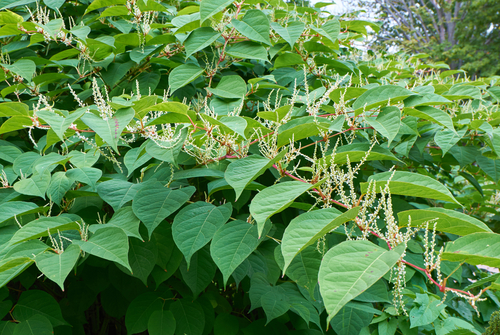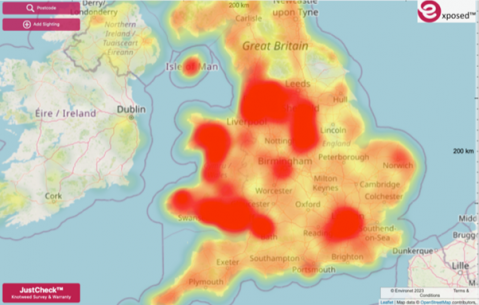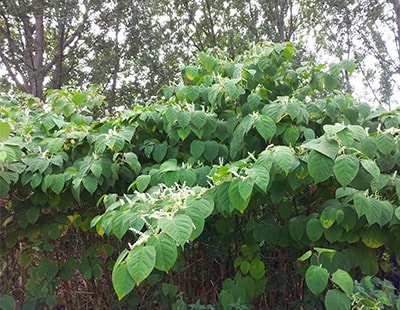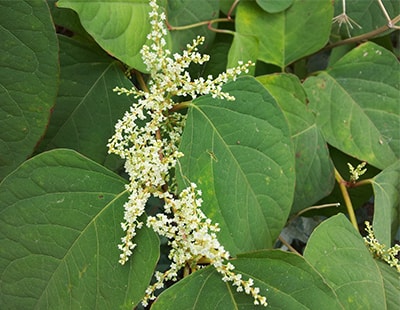
A new heat map is making available information to investors about the threat of Japanese Knotweed.
Investors can enter their postcode directly into the map to discover the number of verified knotweed sightings within a 4km radius of any property they have on their radar, with hotspots highlighted in yellow, orange or, in the worst cases, red. They can also add sightings by uploading a photo to be verified by experts.
Japanese knotweed usually emerges in March or April and grows rapidly to reach up to 2.5 metres in height by mid-summer. It is identifiable by its hard, bamboo-like canes and distinctive shield-shaped bright green leaves which grow in a zigzag pattern along the stem. Mature plants flower in August, becoming covered in clusters of delicate tasselled creamy-white flowers.
Knotweed does not produce viable seeds as all the plants in the UK are female, so it is usually spread accidentally through the movement of soil or gardening waste, or via rivers and streams when pieces of rhizome break off and take hold in new locations.
Tackling knotweed costs the UK economy nearly £250m a year and buyers face a threat not only from potential damage to their property, outbuildings and gardens, but also from legal risks arising from encroachment or when properties are sold.
Whilst it isn’t illegal to have knotweed growing on your land, if it is allowed to cross a boundary into an adjacent property, legal disputes can arise between neighbours. Similarly, when properties are sold, sellers are asked a direct question about whether knotweed is present, even if hidden beneath the ground or within three metres of the boundary, and those who fail to declare it can be sued by their buyer for misrepresentation.
Environet estimates that approximately five per cent of homes across the UK are currently affected by Japanese knotweed, either directly or neighbouring an affected property, typically impacting property prices by around five to 10 per cent.
Nic Seal, founder of Environet, says: “Vigilance is the best way to protect your property from the risks posed by Japanese knotweed. Make sure you know what knotweed looks like and how it differs from other common garden weeds like ivy and bindweed, so you can keep an eye out for it in your garden and neighbourhood.
“Knotweed is easily identifiable during summer, but as we head through the autumn and into winter, the above-ground growth dies back and it becomes much harder to spot. It’s also easier to conceal, so anyone viewing a property to buy should be extra careful.
“There are lots of horror stories out there but the with professional help, knotweed can be successfully treated and a property’s value can be largely restored.”






















Join the conversation
Be the first to comment (please use the comment box below)
Please login to comment